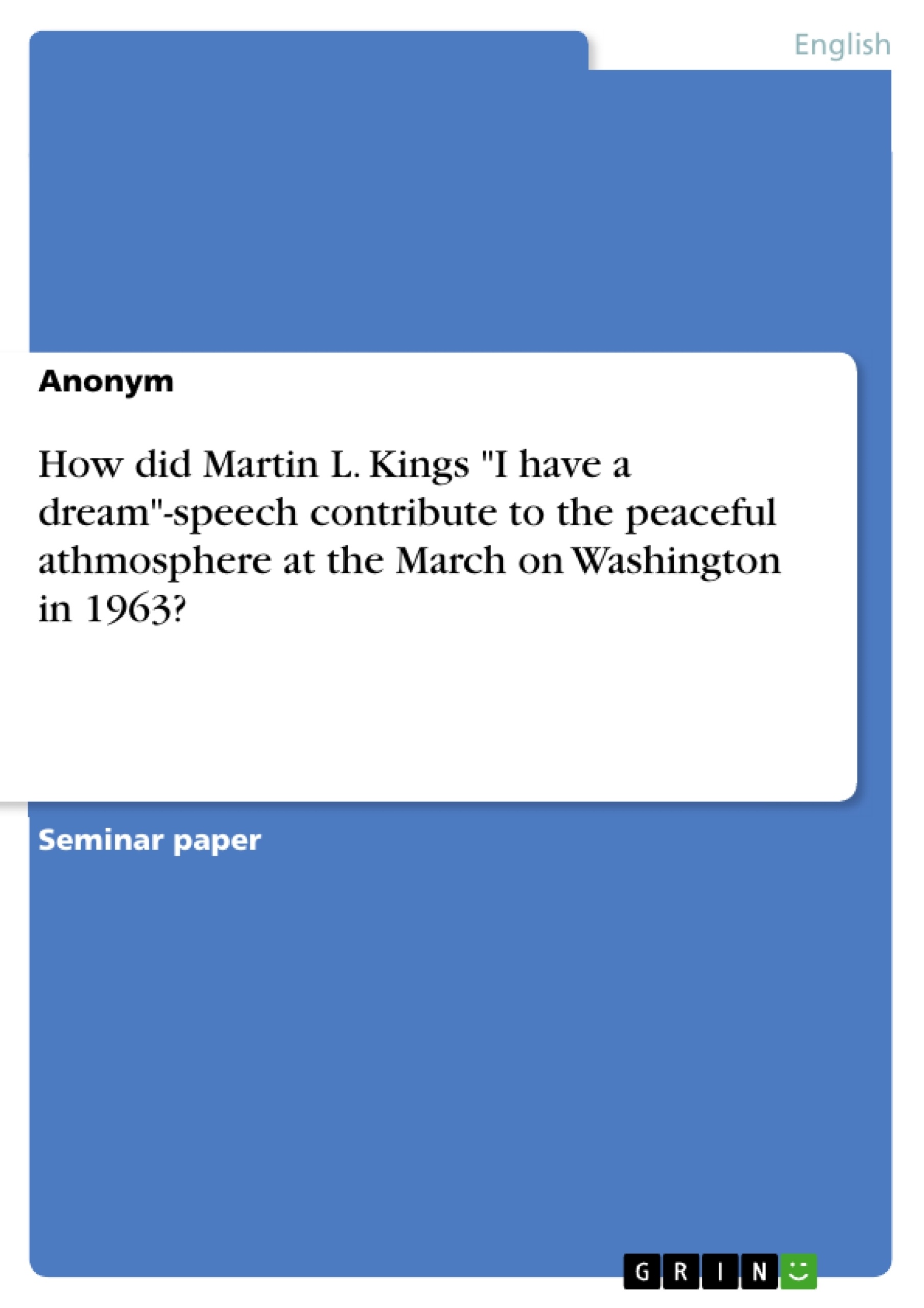“Fears of a possible riot were intense […]. D.C. police units had all their leaves cancelled; neighboring suburban forces were given special riot-control training. […] Liquor sales were banned for a day—for the first time since Prohibition. The Justice Department and the army coordinated preparations for emergency troop deployments; […]. A crew of lawyers was convened to prepare in advance proclamations authorizing military deployments. Fifteen thousand paratroopers were put on alert.”
The high precautions and fears of riots were understandable as just some weeks before, the national guards had to be mobilized when the white governor of Alabama George Wallace had prevented Blacks from entering the Foster Auditorium at the University of Alabama. Despite all fears the largest demonstration in the history of the U. S. A. ended peacefully1. But how was the nonviolent atmosphere achieved, taking into account that the most controversial matter in the American society of that time - the equality of black and white U.S. American citizens was to be discussed?
In my essay I will examine the last speech of the rally: Martin L. King Jr.’s “I have a dream”. I will show that there were thousands of white Americans attending the March on Washington. No one could exactly say what some of them or black activists were up to on this day. I will argue that the speech created community within the black and white listeners by King using various stylistic devices and reminding the listeners of his non-violent strategy. Thus, the central question of this essay will be: Which parts of Martin Luther King’s “I have a dream” speech contributed to the peaceful atmosphere between black and white Americans at the March on Washington in 1963?
This analysis will not be done chronically following the speech. To ensure that the reader still is able to follow, “I have a dream” is appended to the paper with a number before each paragraph. These numbers will be referred to in the essay.
Table of Contents
- Introduction
- Looking at the Background of the Speech
- Using Biblical Imagery
- Quoting the Bible
- Addressing the Guilty
- Involving the White Listeners
- Using Cultural Images from the White American past
- Reminding of the Nonviolent Resistance
- Conclusion
Objectives and Key Themes
The essay aims to analyze Martin Luther King Jr.'s "I have a dream" speech delivered at the March on Washington in 1963, exploring how it contributed to the peaceful atmosphere between black and white Americans. The author focuses on the speech's stylistic devices and King's emphasis on non-violence to understand how he fostered unity and a sense of shared purpose among the diverse audience.
- The importance of King's speech in fostering peaceful coexistence
- The role of religious imagery in uniting black and white listeners
- The use of cultural references and shared history to bridge divides
- King's constant reminder of his non-violent strategy
- The impact of the speech on the Civil Rights Movement
Chapter Summaries
- Introduction: The essay begins by setting the context of the March on Washington, highlighting the high tensions and fears of violence surrounding the event. It introduces the central question of how King's speech contributed to a peaceful atmosphere.
- Looking at the Background of the Speech: This section discusses the historical context of the March and the significance of the Civil Rights Act being debated at the time. It emphasizes the need for King to calm the crowd and ensure a peaceful demonstration.
- Using Biblical Imagery: This chapter explores King's use of religious imagery and his reliance on biblical references to connect with the audience. The author analyzes the specific passages and their impact on the speech's overall message.
Keywords
The primary focus of this essay lies on the analysis of Martin Luther King Jr.'s "I have a dream" speech. Key themes include the peaceful atmosphere fostered by King's speech, the role of religious imagery, the use of cultural references, and King's constant reminder of his non-violent strategy. The essay also explores the historical context of the March on Washington and the significance of the Civil Rights Act.
- Quote paper
- Anonym (Author), 2004, How did Martin L. Kings "I have a dream"-speech contribute to the peaceful athmosphere at the March on Washington in 1963?, Munich, GRIN Verlag, https://www.grin.com/document/61463



